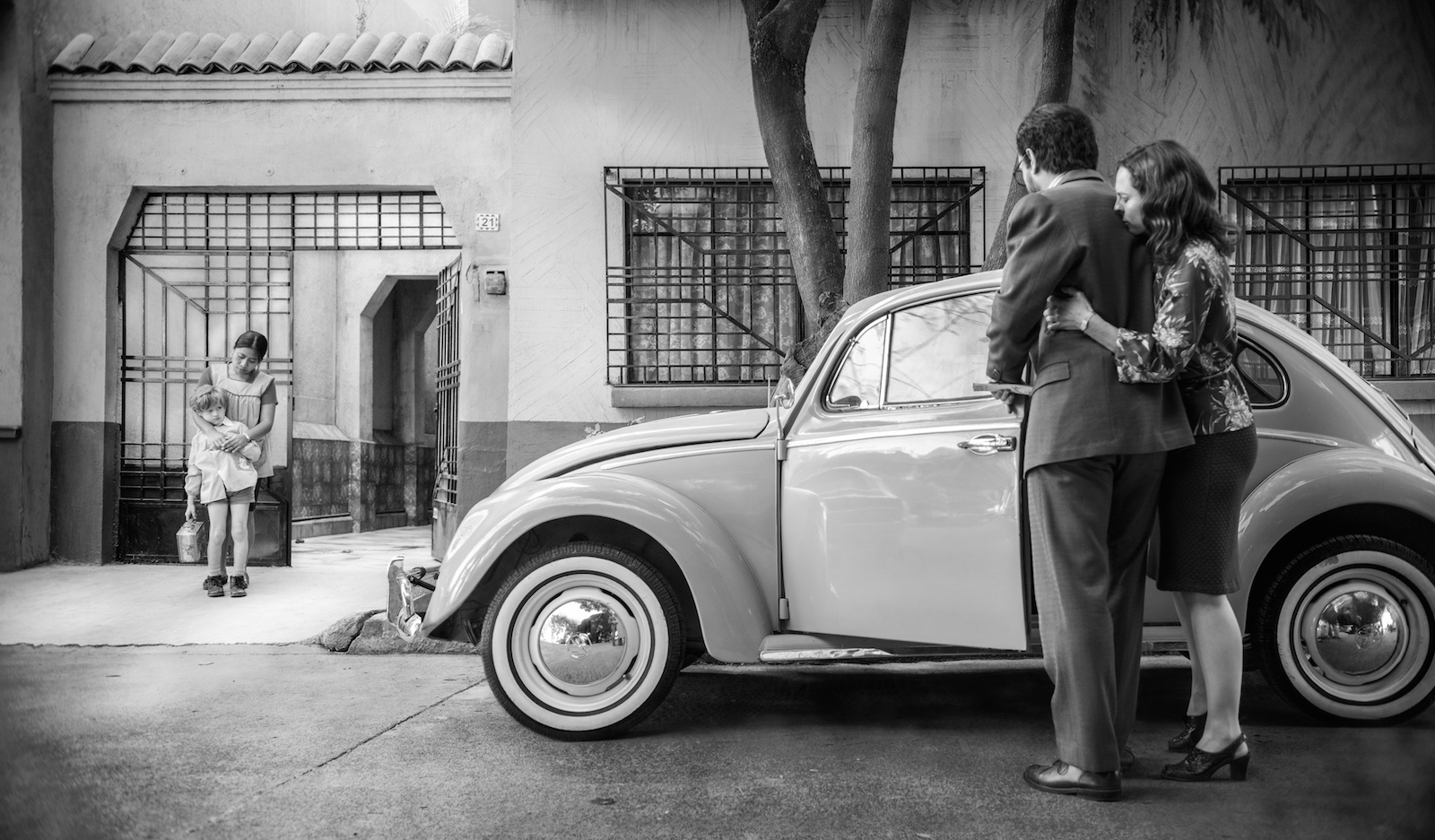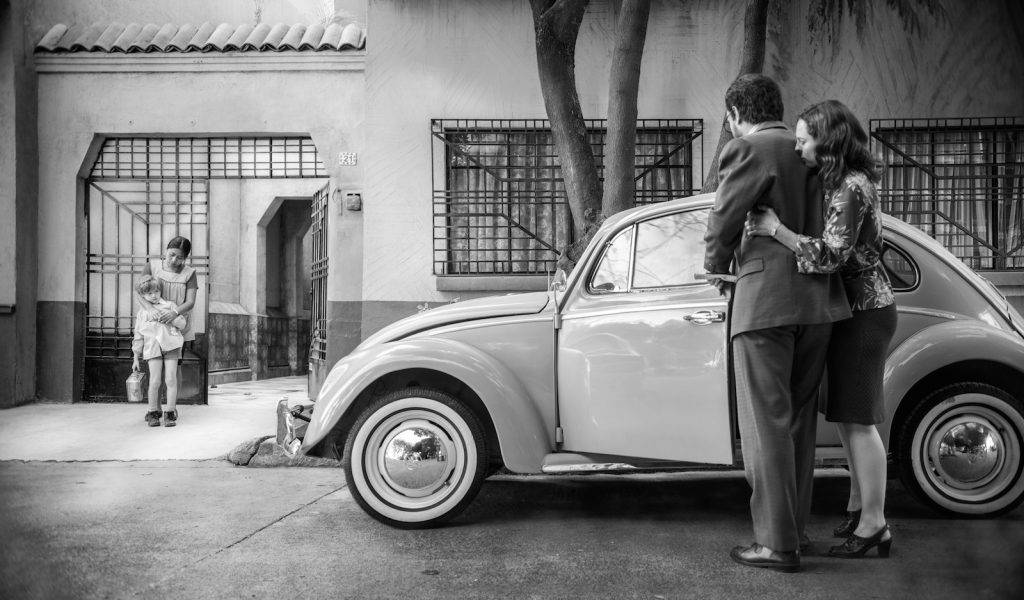A recent study showing that film reviews are overwhelmingly written by white critics (82 percent last year) has stimulated a conversation about the lack of diversity at entertainment outlets across the United States. Through countless panel discussions and initiatives by major film festivals, change is on the horizon but slow going.
Latinos, in particular, are vastly underrepresented in the world of criticism. A glance at Rotten Tomatoes highlights this glaring disparity. Currently, only a handful of reviews of Alfonso Cuarón‘s Mexico City-set drama Roma are written by Latinos (in English). This reflects not only mainstream media’s complete dearth of Latino staff writers but the unwillingness to assign freelancers a chance to pen write ups on a movie that’s a buzzy awards contender.
From indigeneity, to the particulars of social class and domestic servants in Mexico, non-Latinos have glossed over the cultural specificity of Cuarón’s epic period piece in their reviews. It’s for these reasons we’ve created a space for Latino critics to publish their reviews of a film that speaks, in particular, to our community. While Latinos continue to be left out of the conversation, we’ll not only keep pushing for a seat at the table but in the meantime have created our own place to sit.
–Vanessa Erazo, Remezcla Film Editor
Roma opens in theaters in Los Angeles (The Landmark) and New York (Landmark W 57th and IFC Center) on November 21. Additional cities will be added on November 29 and December 5. The film will be released globally on Netflix on December 14, 2018.
"Cuarón’s gorgeous, revelatory opus feels recognizable even to those who grew up on the other side of the border."

With its titular reference to Colonia Roma, Alfonso Cuarón has fashioned a vividly poetic love letter to Mexico City. Yet, the masterful storyteller’s autobiographical epic contains multitudes. It’s a transplanted Chilango’s tribute to his birthplace and an homage to the women who raised him, as well as an enthrallingly impressionistic ode to childhood memories.
Set in 1971 and told from the gentle perspective of Cleo, (a sublimely soulful Yalitza Aparicio), the family’s nanny is at the center of breathtaking visuals offered up in languorous, resplendent 65mm black-and-white. Cleo appears first on screen cleaning up after the family dog. She repeats his name, “Borras, Borras,” almost chanting in a whispery sing-song.
But quotidian duties are just a small part of Cleo’s life. Her placid face hints at reserves of complexity. We feel her affection for the family’s four children and her swallowed frustration with the adults who employ her: Sofia (Marina de Tavira), the mother struggling with a philandering husband, and stolid grandmother Señora Teresa (Veronica Garcia). We watch anxiously as adults maneuver their lives – and their large American cars – awkwardly. Family tension feels palpable. So does the student unrest in Mexico City, culminating in the devastating Corpus Christi massacre.
Thanks to Cuarón’s superb direction, editing, and cinematography, we are plunged into the midst of Cleo’s existence whether battling a pounding undertow on a Veracruz beach, opening her heart to a belligerent boyfriend, or navigating a drunken family holiday at a rambling hacienda. Her fierce devotion wrenches our hearts as we absorb how Cleo is alternately treated as a beloved member of the family and also as an outsider.
Roma’s groundbreaking sound design is as indelible as its haunting images. Nearly every scene is a stunning tableau. Consequently, this cinematic marvel makes the most potent impression when watched on the big screen. Cuarón meticulously replicated his childhood home, aided by production designer Eugene Caballero. He drew spectacularly naturalistic performances from a cast of mostly non-actors and presents his memories with a brilliant clarity and dialogue – in Spanish and Mixtec – that never stoops to sentimentality, eliciting only earned emotions. A technical marvel, the story is at once achingly intimate and epically socio-political. Cuarón’s gorgeous, revelatory opus feels recognizable even to those who grew up on the other side of the border. An exhilarating masterpiece, Roma is at once quintessentially Mexican and profoundly universal.
"It’s as close to cinematic poetry as you can get."
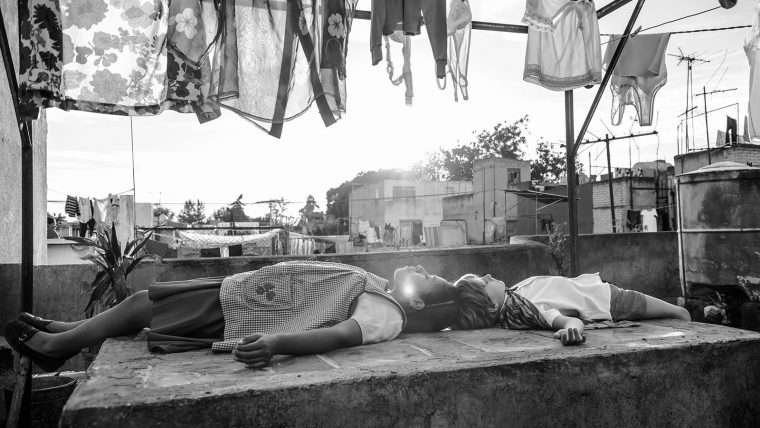
There’s no denying the beauty and timelessness at the heart of Alfonso Cuarón’s deeply personal drama Roma. It’s as close to cinematic poetry as you can get and Cuarón, with an expert-level attention to detail, places us at the center of his story – watching, listening, waiting, and cherishing every delicate moment.
As with all his past films – whether taking audiences on a road trip through rural Mexico in his 2001 masterpiece Y tu mamá también or floating through the vastness of space in 2013’s Gravity – there is an intimacy in Cuarón’s work that is unlike any director making films today. It’s never been more apparent at just how meditative his voice has become than with Roma, an autobiographical film based on his childhood in Mexico City during the 1970s told from the perspective of the woman who helped raise him – his nanny Libo. (Yalitza Aparicio plays a fictionalized version named Cleo.)
In Cleo, Cuarón has created a character of pure devotion and human spirit, and Aparicio delivers a restrained albeit passionate performance. In Roma, Cuarón examines Cleo’s relationship with the middle class family who employs her and the complex social dynamics that keep them separated. In comparison, Brazilian filmmaker Anna Muylaert’s 2015 film Que horas ela volta? (The Second Mother) does a better job presenting this theme, but Cuarón’s emphasis on a single character’s experiences is admirable as we observe Cleo perform tedious tasks but also comforts the children who are witnessing the dissolution of their parents’ marriage.
From a technical standpoint, Roma is second to none – from Cuarón’s brilliant direction and first foray into the role of cinematographer (usual collaborator Emmanuel Lubezki was not available) to the meticulous production design by Academy Award winner Eugenio Caballero (Pan’s Labyrinth). The black-and-white 65mm film Cuarón utilizes gives an epic feel to the picture and his tracking shots reveal a landscape full of life that is oftentimes overshadowed in other films by the shiniest object in the room. Instead, Cuarón makes the ordinary seem remarkable – soapy water gliding across a stone floor, laundry hanging from a clothesline, a lizard scurrying across the dry earth.
Appreciate what Cuarón has constructed with Roma. Like other recent image-heavy films such as Tree of Life, Dunkirk and The Revenant, what Roma lacks in standard narrative substance, it makes up for in his skill as a visual storyteller.
"Cuarón’s gift to us is a chance to remember, or even experience for the first time, what it feels to be loved by someone that way."
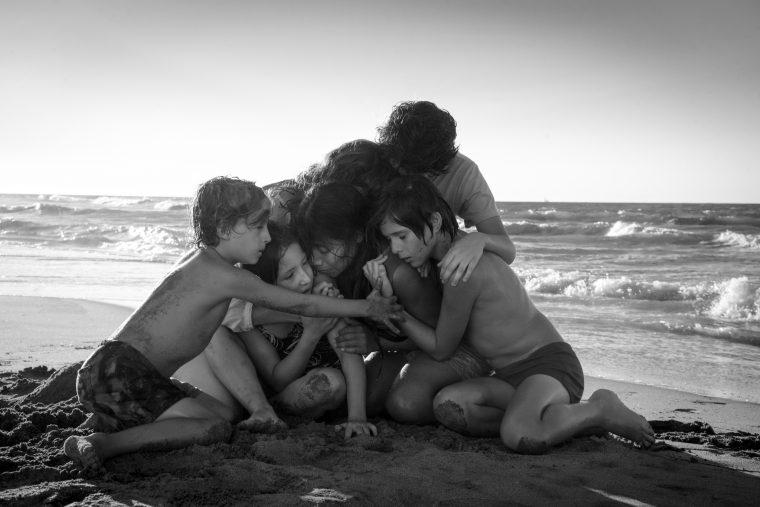
If every frame of Alfonso Cuarón’s Roma were hanging from a clothesline, like the wet garments its protagonist lays out to dry, the substance dripping from them would be the physical manifestation of memory. Soaked in the Mexican director’s childhood recollections, the black-and-white drama is a cinematic event of masterful sensibility that seeps through every fiber of its creation.
At once an immaculate technical triumph and a life-affirming storytelling knockout, Roma resurrects Mexico City of the 1970s in order for its characters to inhabit it as they grapple with motherhood, loneliness, and the miracle of renewed hope.
Charged with incarnating the women of Cuarón’s formative years, the humbly magnetic Yalitza Aparicio (a first-time actress from Tlaxiaco, Oaxaca) plays Cleo, the live-in housekeeper for a well-off family, while theater veteran Marina de Tavira is Sofia, Cleo’s employer, devastated by her husband’s unfaithfulness. The unspoken partnership they form to nurture Sofia’s four children is the movie’s ever-present and affecting guiding star.
Lensed by Cuarón himself, Roma has been profusely and deservingly praised for its spectacular photography, but its impact wouldn’t be such without Eugenio Caballero’s laborious dedication to historically accurate production design: from recreating entire streets and returning them to their former glory, to ensuring toys, furniture, and decorative objects resembled the bygone era the filmmaker was invoking. No detail was spared to maximize the nostalgic beauty of each space.
Imposing in its craftsmanship ambitions, yet always exquisitely tenderhearted, the story of Cleo and Sofia – warriors in intimate battlefields – is an immersive synthesis of vivid sounds, vast landscapes, and expressive faces that trigger different emotional flashpoints depending on who is watching. Like a wizard with infinite powers, Cuarón inserted a beating heart into the pertinent technologies to achieve this feat. It’s sensorially and visually mesmerizing, but it’s all done to align with the purposeful vulnerability of his magnum opus.
Few times have words failed me like they did after being nestled in Roma’s warm embrace for over two hours. Surrounded by a post-screening glow, I understood that Cuarón had invited us to bask in the purest everlasting love: one that can withstand the fury of nature, the cruelty of mankind, and the passage of time. Cuarón’s gift to us is a chance to remember, or even experience for the first time, what it feels to be loved by someone that way.
"The result of Cuarón’s efforts is a unique vision that’s electrifying and moving, not unlike life itself."
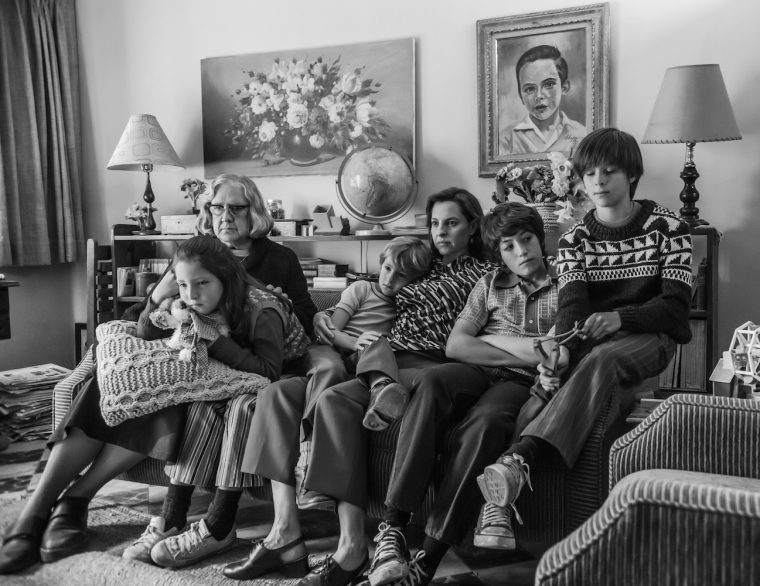
The first scene of Alfonso Cuarón’s Roma is a study in patience and beauty. Cleo (Yalitza Aparicio) is unseen but can be heard throwing buckets of water on the driveway and scrubbing away dirt. As the credits roll, the introductory sequence sets the steady pace of the movie which will spend long stretches of time observing Cleo at work as a housekeeper or at play. We’re to look at Cleo in the way the middle-class family that employs her does not: as a fully-formed person with her own problems, joys, and heartache.
Cuarón’s Roma is an intensely personal work based on his memories and that of his nanny, Libo. Set in the 1970s and in the Mexico City neighborhood that gives the movie its title, the film follows the cinematic version of Libo (Cleo) as she tends to the needs of four children, a large dog, and an unhappy couple on the brink of divorce. When the husband leaves his family, Cleo’s role grows as a confidant and child wrangler for the grief-stricken wife, Sofía (Marina de Tavira). But Cleo is more than just her work. She has her own romantic interest outside the home and copes with hardships by relying on her friend and fellow housekeeper, Adela (Nancy García García), by gossiping in their shared indigenous language of Mixtec for rare moments of privacy.
Throughout the achingly gorgeous black-and-white film, Cleo is granted a sense of humanity denied her by the bosses. The movie captures her longing stares, her awkward moments, or terror in the face of danger that her employers may never have noticed. In one painfully telling scene, Cleo sits on a pillow on the floor next to the couch where the rest of the family sits while watching TV, holding on to one of the children. She is a part of the family in a strange way but visually separated from ever being considered on equal terms. The camera lingers on her, almost as if Cuarón were revisiting these memories and realizing how she must have felt to be treated that way by his mother.
In a time of so much animosity towards Latin American immigrants, here comes one of our industry’s preeminent artists to share a story that humanizes and radically empathizes with an indigenous Mexican woman. The result of Cuarón’s efforts is a unique vision that’s electrifying and moving, not unlike life itself.
"Roma’s images demand to be described as epic even as the story they house is intentionally mundane."
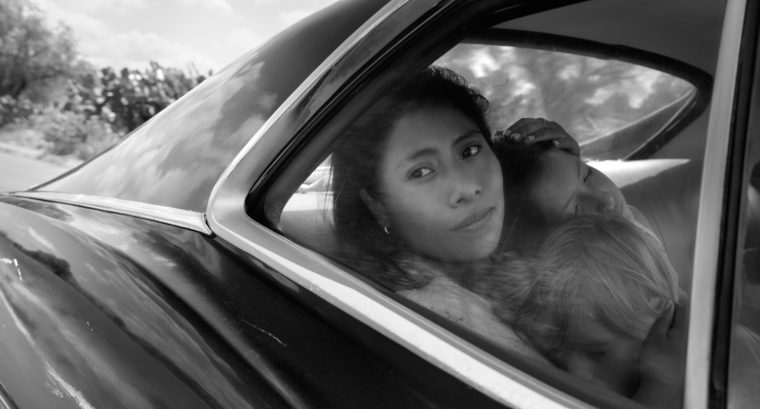
To watch Roma is to walk into a memory. Not the frayed and hazy kind you so often get in flashbacks in cinema. These memories may be in black and white but they’re so crisp that every shot demands your full attention. It explains why Alfonso Cuarón so relishes long takes: he wants you to linger in this reconstruction of his childhood and watch closely the textures that made up his life in Mexico City in 1971. Soapy water on the tiled floor. Dusty winds in an open field. Roaring fires in a forest full of trees. Grainy films on the big screen. Roma’s images demand to be described as epic even as the story they house is intentionally mundane.
Ostensibly we’re following Cleo (newcomer Yalitza Aparicio), an indigenous woman working for a family of six. She cleans, she launders, she babysits. Mostly, she stands aside while trying to make the life of her employer run smoothly in the face of a looming separation and even more seismic cultural change happening just off-screen. Yet Cuarón wants us to see Cleo up close, often guiding his camera away from where seemingly more dramatic scenes are unfolding (marital woes, inappropriate come-ons, student protests gone awry) to focus on this unassuming young woman. Her stoicism – as much a part of Cuarón’s script as Aparicio’s performance – slowly gives way to the kind of story that, anywhere else, could easily make the backbone of a Mexican telenovela: the young man she was casually seeing (and who we’ve seen doing naked martial arts for Cleo in a nondescript bedroom) disappears the moment she tells him she’s pregnant.
But if the quiet moments are what draw you in, Roma has no shortage of pulse-quickening scenes that make you feel like you’re inside its world, gasping to be let out. A hectic sequence set in an overrun hospital, in particular, is enough to remind you that no one does anxiety-inducing long takes quite like the Gravity and Children of Men director. Even in those moments, though, you’re overwhelmed with how painstakingly reconstructed this bygone world is – not merely a postcard come to life but a memory crackling with life.
At once a meditation on motherhood and family and an examination of class and gender in a middle-class household in Mexico City, Roma is a cozy blanket of a film, as affecting as it is beautiful.
"Roma is not only Cuarón’s best film since Children of Men: it is also the best film of the year."
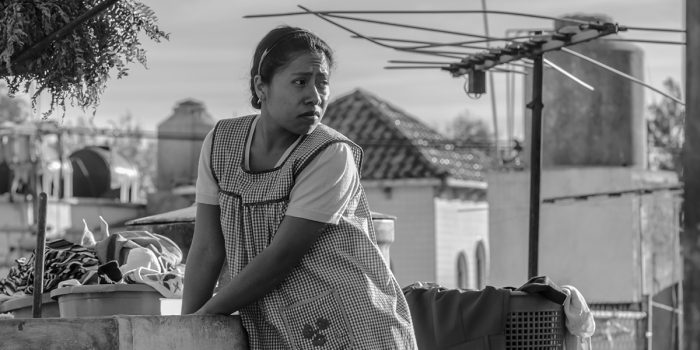
Alfonso Cuarón’s masterful Roma transports you to a world that’s both long gone and still here, one whose boundaries, streets, and buildings were changed by a powerful earthquake and by the whims of modern urban development. That world is Mexico City, specifically Colonia Roma where Cuarón grew up circa 1971. It’s three years after the Tlatelolco Massacre with political tensions still running high and culminating in the Corpus Christi Massacre – an attack on student protesters by paramilitary forces. Roma, however, is not an overtly political film: politics is just one of many the threads Cuarón weaves in this rich tapestry based on his childhood memories.
Shot in black and white, the film centers around Cleo – based on Cuarón’s own nanny, Liboria Rodríguez – a Mixtec domestic worker employed by a middle-class family. Cleo looks after Sofía (Marina de Tavira), her physician husband, their four children, and a dog. Although her love for them is often reciprocated, she’s constantly reminded of her status as an outsider. The film settles into a deliberate and hypnotic rhythm that never feels slow as Cuarón’s camera follows her as she performs her daily chores with music as her constant companion. Cleo goes out on a date with Fermín (Jorge Antonio Guerrero), a martial arts aficionado who later abandons her after she tells him that she’s pregnant. Sofía is also abandoned by her husband who asks for a divorce. Still, Cleo is the heart of the film, her composure, her dignity, her kindness, and her courage a guidepost for Sofía and other women to follow.
Cuarón packs every frame with so much detail and so much life that it requires multiple viewings to pick them apart. He also leaves room for some wonderfully surreal moments. For a movie so painstakingly crafted as this one, to find out that a limited number of actors received written dialogue from the director while others were asked to improvise on the day of the shoot and that most of them were non-professional actors is a revelation. This adds to the air of verisimilitude, of lives lived, that permeates the whole enterprise.
Roma is not only Cuarón’s best film since Children of Men: it is also the best film of the year. It is the work of an artist at the top of his game and one that I yearn to revisit soon on the big and small screens.



